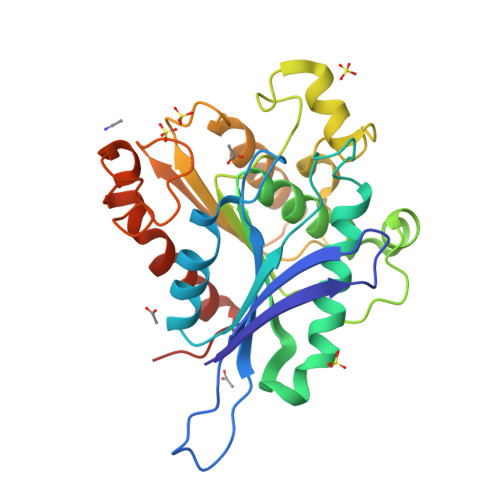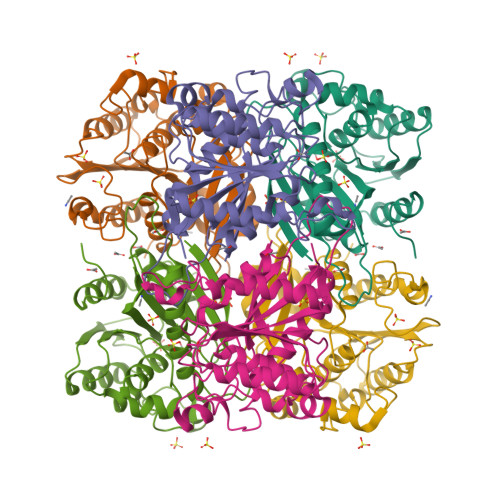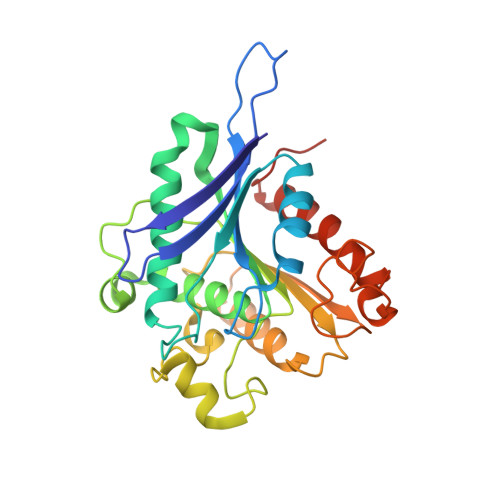Structure, Biochemical Characterization and Analysis of the Pleomorphism of Carboxylesterase Cest-2923 from Lactobacillus Plantarum Wcfs1
Benavente, R., Esteban-Torres, M., Acebron, I., De Las Rivas, B., Munoz, R., Alvarez, Y., Mancheno, J.M.(2013) FEBS J 280: 6658
- PubMed: 24127688
- DOI: https://doi.org/10.1111/febs.12569
- Primary Citation of Related Structures:
4BZW, 4BZZ, 4C01 - PubMed Abstract:
The hydrolase fold is one of the most versatile structures in the protein realm according to the diversity of sequences adopting such a three-dimensional architecture. In the present study, we clarified the crystal structure of the carboxylesterase Cest-2923 from the lactic acid bacterium Lactobacillus plantarum WCFS1 refined to 2.1 Å resolution, determined its main biochemical characteristics and also carried out an analysis of its associative behaviour in solution. We found that the versatility of a canonical α/β hydrolase fold, the basic framework of the crystal structure of Cest-2923, also extends to its oligomeric behaviour in solution. Thus, we discovered that Cest-2923 exhibits a pH-dependent pleomorphic behaviour in solution involving monomers, canonical dimers and tetramers. Although, at neutral pH, the system is mainly shifted to dimeric species, under acidic conditions, tetrameric species predominate. Despite these tetramers resulting from the association of canonical dimers, as is commonly found in many other carboxylesterases from the hormone-sensitive lipase family, they can be defined as 'noncanonical' because they represent a different association mode. We identified this same type of tetramer in the closest relative of Cest-2923 that has been structurally characterized: the sugar hydrolase YeeB from Lactococcus lactis. The observed associative behaviour is consistent with the different crystallographic results for Cest-2923 from structural genomics consortia. Finally, the presence of sulfate or acetate molecules (depending on the crystal form analysed) in the close vicinity of the nucleophile Ser116 allows us to identify interactions with the putative oxyanion hole and deduce the existence of hydrolytic activity within Cest-2923 crystals.
Organizational Affiliation:
Department of Crystallography and Structural Biology, Institute of Physical Chemistry Rocasolano, CSIC, Madrid, Spain.





















